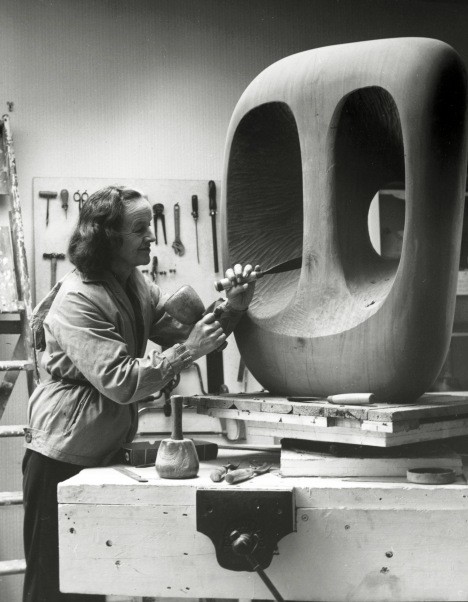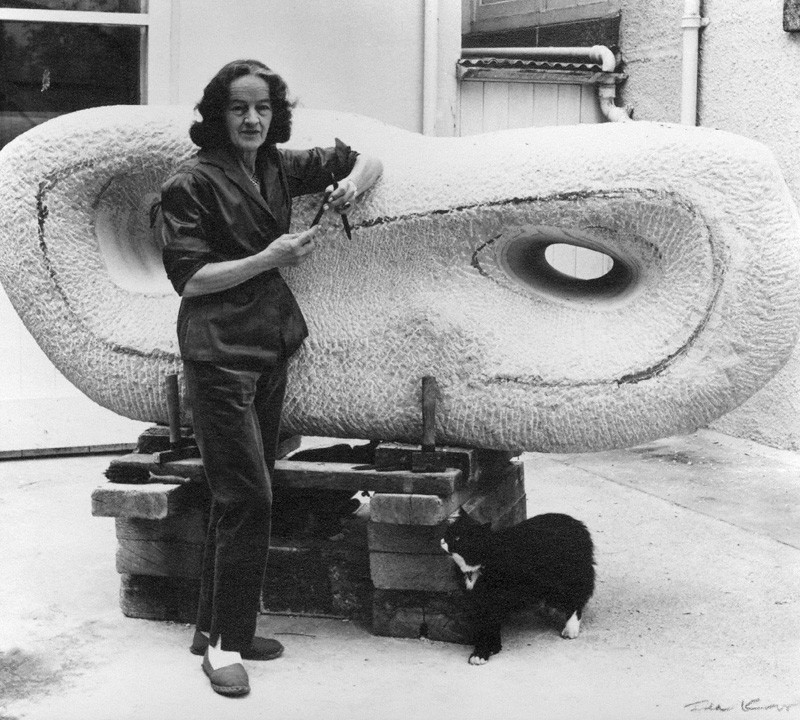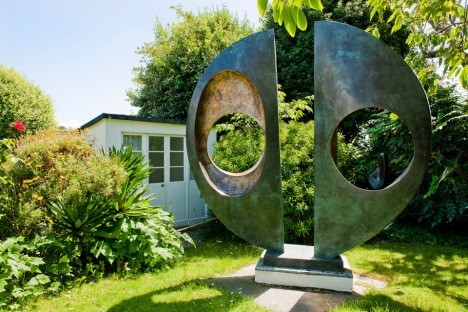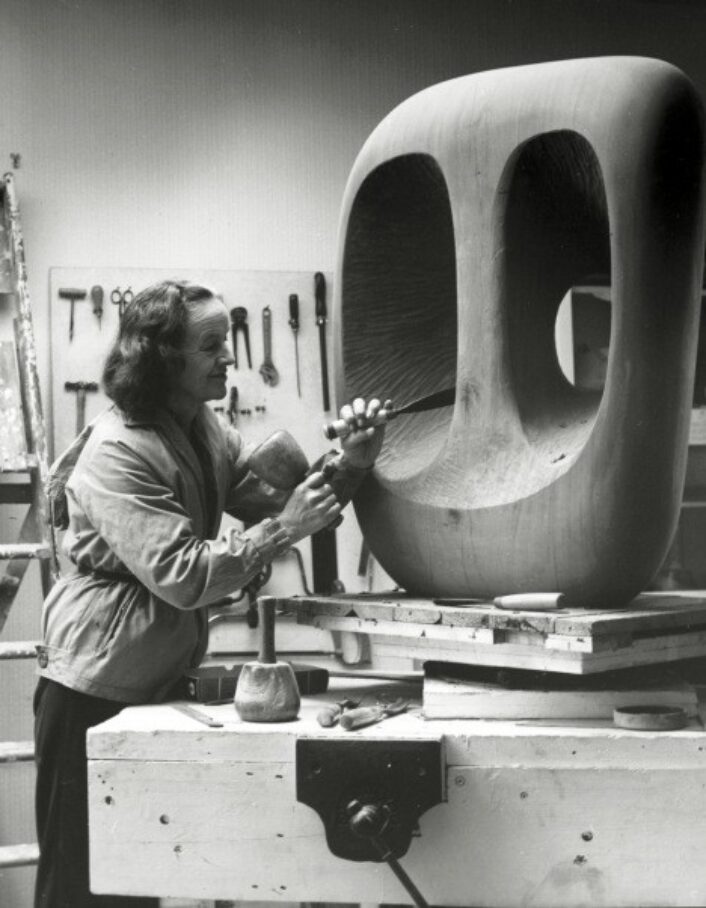Barbara Hepworth is perhaps one of the most inspiring female artists. She is heralded as the first artist to create completely abstract sculpture anywhere in the world! She was also the first to use deliberate holes in her sculptural work. Hepworth was determined to be known as an artist, not a female artist, and she accomplished just that. She was a key part of Britain’s thriving abstract artistic movement, but was not distracted by her rise to popularity. Instead she preferred the seclusion of her St. Ives home. Hepworth wrote many letters in her time at St. Ives, above is a video reading of one of her letters describing her work.
Her dedication to skill is demonstrated by her work in marble. When Hepworth was in school, marble carving was not a part of her training, it was still seen as the work of stone masons. Hepworth traveled to Italy to learn the skill that would become central to her practice.
There are two shows of Hepworth’s work currently on display. A Great Freedom: Hepworth 1965-1975 is on display at the Hepworth Wakefield in Yorkshire, now through April 2016, and Barbara Hepworth: Sculpture for a Modern World is on display at Tate Britain through 25 October 2015.

Barbara Hepworth in her studio in 1963 working on a wood carving, Hollow Form with White Interior.
Image courtesy of the Tate.

Barbara Hepworth with her cat Nicholas. The sculpture ‘Reclining Form (Rosewall)’ was inspired by a mountain near her home in St. Ives. In Hepworth’s later years she left complete abstraction in preference of subtle references to natural forms.
Image courtesy of The National Portrait Gallery.

Hepworth’s sculpture outside the Barbara Hepworth Museum and Sculptural Garden in St. Ives, where the artist lived and worked between 1949 and her death in 1975.
Image courtesy of the Tate.
